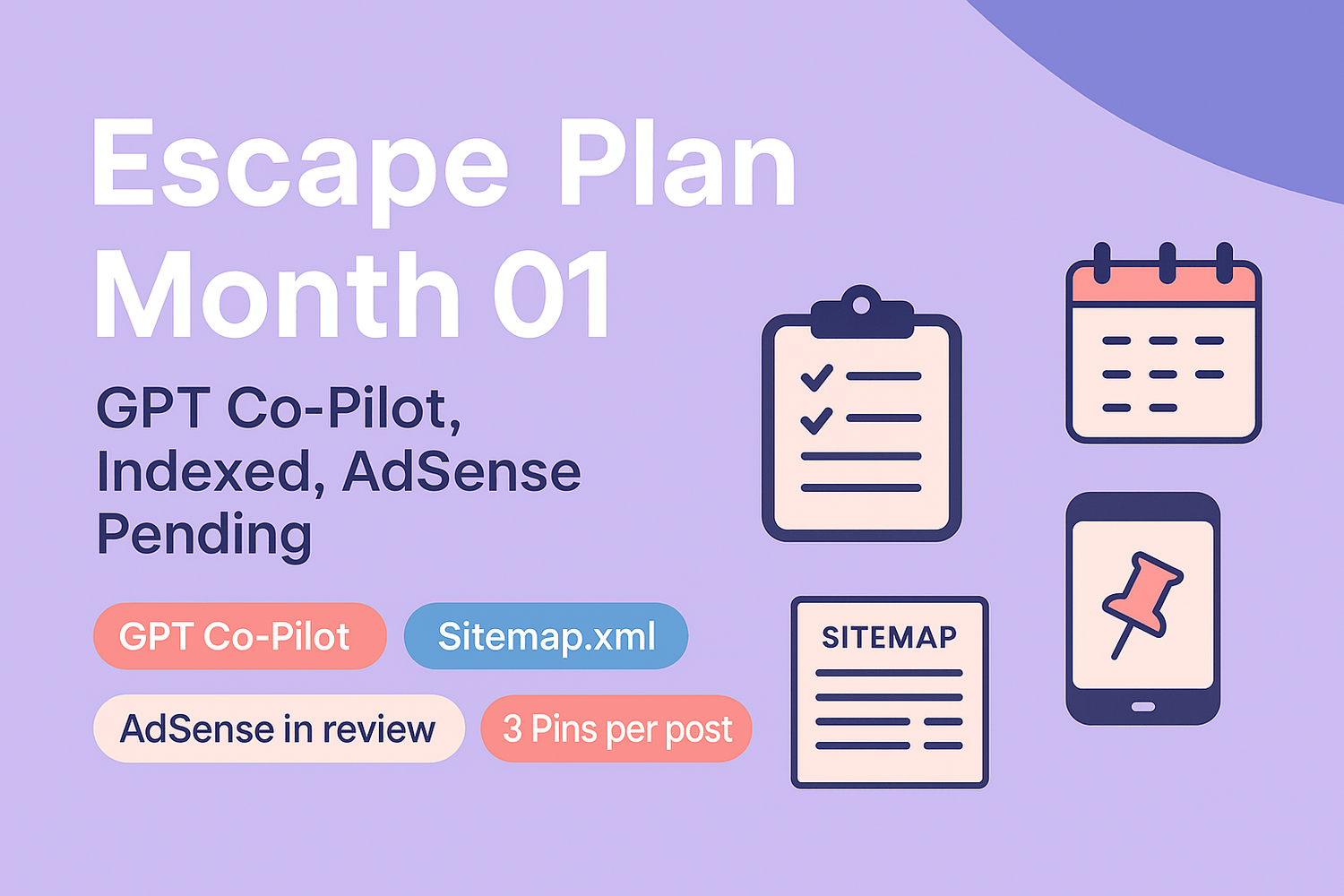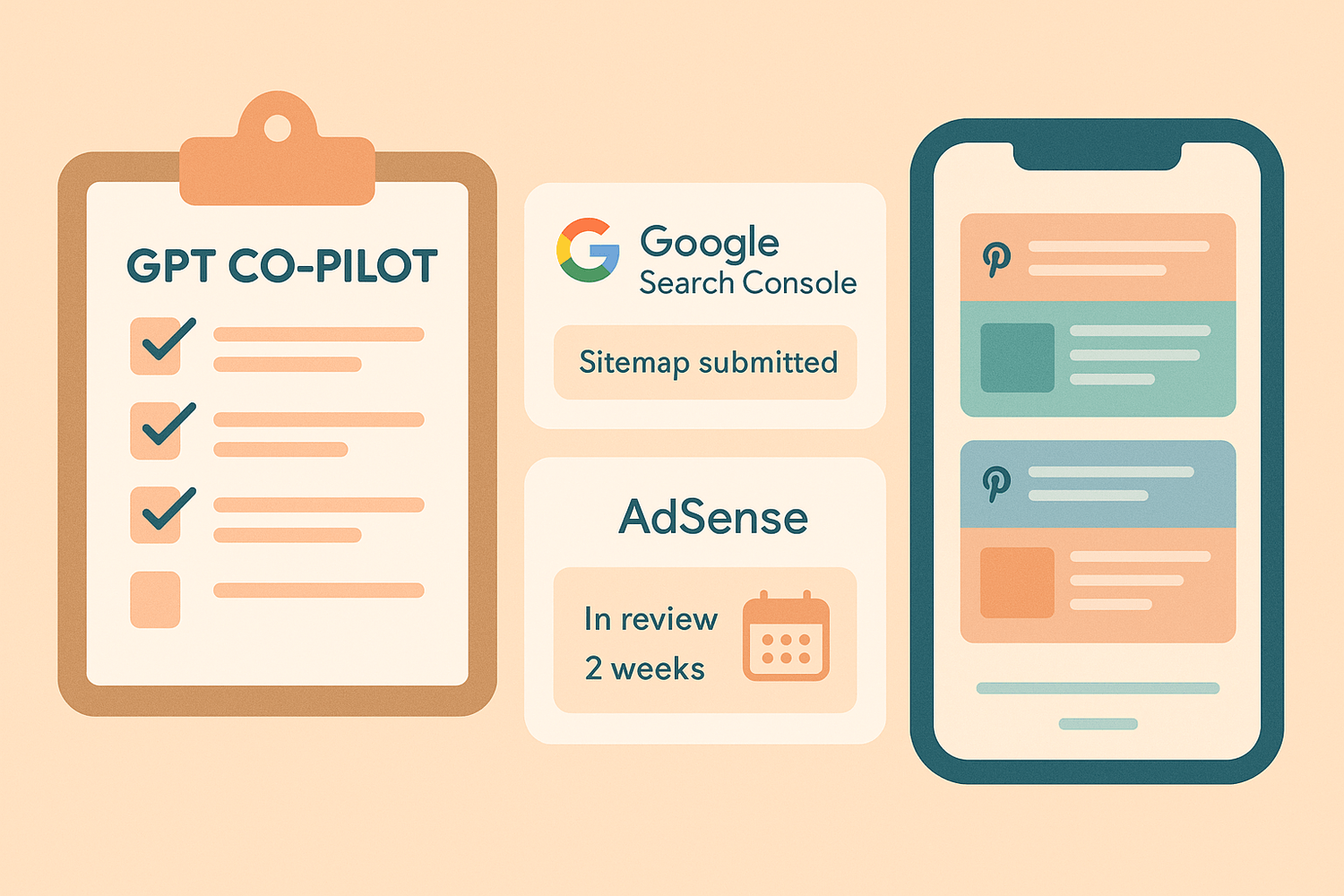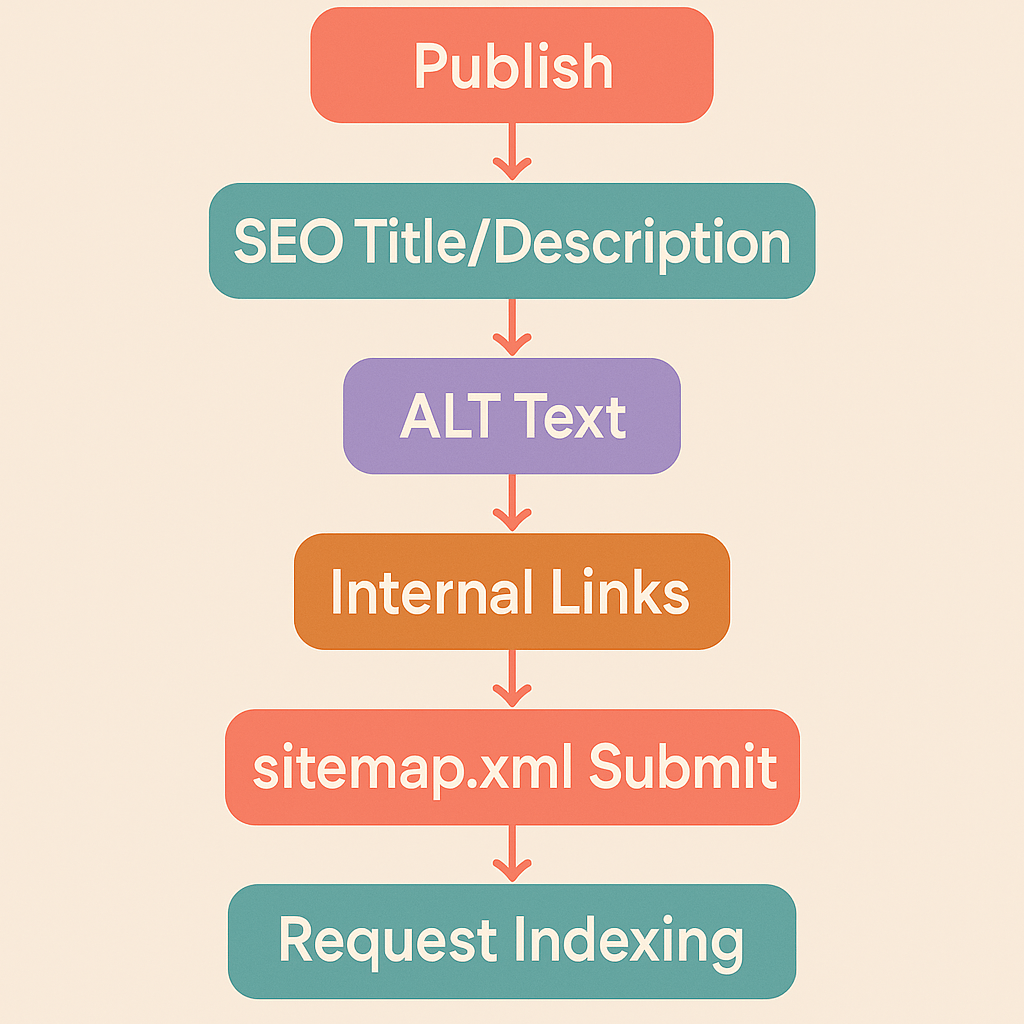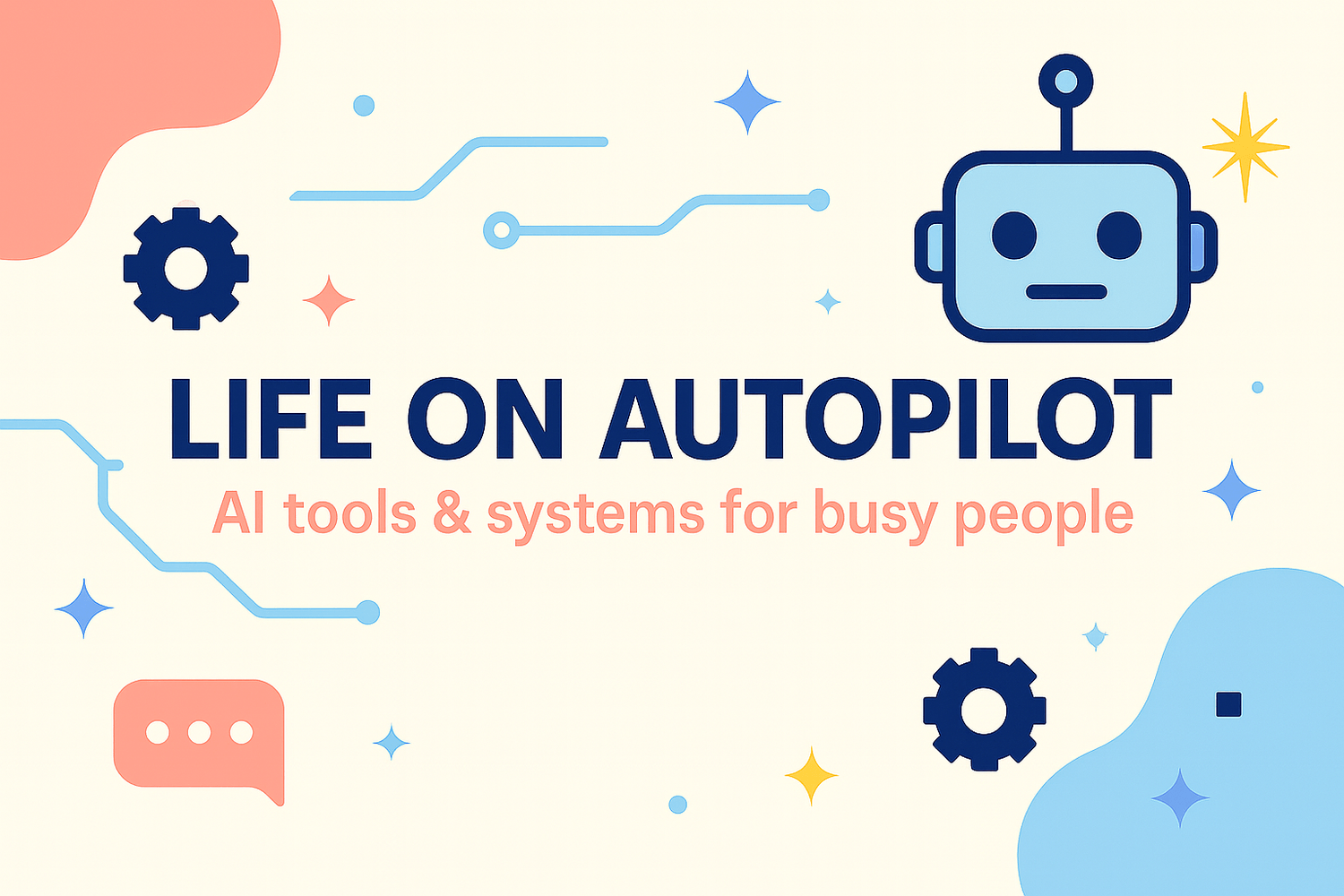Escape Plan Month 01: My GPT Co-Pilot, Indexed, AdSense Pending — What Surprised Me (With Mini How-Tos)
The Escape Plan in action: automate the boring bits, focus on quality. GPT co-pilot built, sitemap fixed, AdSense pending—here’s the walkthrough.

Previously in my journey: I promised systems over chaos; this month I led with automation that frees me up to write better.
1) My co-pilot: the GPT I’m building (and refining every week)
I built a custom GPT to handle setup so I can focus on quality. It drafts my SEO block, generates a clean header-code snippet, proposes internal links (and maintains my little link repository), writes Pinterest pin copy, and drafts FAQs. I still edit everything—this isn’t hands-off—but each tweak saves minutes I can pour back into the post.
How I set it up (quick): a one-pager with my voice + structure; a “never-forget” checklist (define acronyms, UTMs, 3 images, ALT text, FAQ JSON-LD); and reusable prompts like “generate header code” and “propose internal links with descriptive anchors.”
How I use it (per post): ask for SEO title/meta → generate header code → propose 2–3 internal links + anchors and update the repo → draft 3 Pins (hero/process/quote) → draft 3–4 FAQs.
Lesson: AI’s a teammate that follows your SOPs (standard operating procedures). The clearer the SOP, the better the help.

3) The AdSense waiting room (applied ~2 weeks ago)
I applied around Aug 20, 2025 and I’m still waiting. That’s normal. While Google reviews, I’m tightening navigation, meta descriptions, and internal links instead of refreshing the status page. Mini how‑to: paste the AdSense verification snippet once in your global header code and leave it in during review; keep improving content. Consistency prevents snippet whack‑a‑mole. Why it matters: Monetization is a lagging indicator. Build value; ads catch up.
4) The favicon mystery: set in Systeme.io, waiting on Google
I uploaded a 32×32 favicon in Systeme.io and can see it on my pages, but Google Search hasn’t updated it yet. That usually needs another crawl. I’m testing whether I also need an explicit <link rel="icon"> in the header or just patience. Mini how‑to: Systeme.io → Settings → (domain) → Upload favicon → Save; then ensure the file is reachable and consider adding <link rel="icon" href="/favicon.ico">. Expect a delay until Google recrawls. Why it matters: It’s a tiny brand signal that travels with your site.
5) ALT text: accessibility first, SEO second
I stopped keyword sprinkling and started writing ALT that truly replaces the image in context (decorative images get empty alt=""). It’s better for readers and clearer for search. Mini how‑to: keep ALT under ~150 characters and describe the purpose (“Flow diagram: publish → SEO → sitemap → index request”).
6) Header code: one source of truth (and my GPT generates it)
The header is where the grown‑up bits live—Search Console verification, analytics, AdSense. I keep it minimal and centralized to avoid conflicts. As part of my workflow, I have the GPT generate a per‑post header code block so I paste once and stay consistent across layout/pages. Why it matters: Clean, centralized tags = better data and fewer mysterious bugs.
7) Internal links: from vibes to a plan (ChatGPT keeps my repo)
Random linking wasn’t cutting it. I keep a tiny link plan (slug + 2–3 best next reads + exact anchor text). My GPT proposes links for each new post and updates the repository automatically; I approve and place them where readers naturally want more. Descriptive anchors beat “click here.” Mini how‑to: add two links per post with anchors like AI content batching or Content on Autopilot, not “read more.”
8) Pinterest rhythm: 3 Pins per post (batched weekly)
Sustainable > perfect. I create one hero, one process graphic, one quote/summary and queue them weekly. The native scheduler allows a small queue; batching weekly keeps me consistent. Mini how‑to: duplicate your post cover in Canva into process and quote formats; vary titles/descriptions slightly to see what gets early saves.

The feelings (and the reset)
It’s a lot of work, and yes, some nights I wonder if the traffic will come or if my posts are “good enough.” I’m resetting from daily to 3×/week to protect quality. My plan: batch 6 months of posts, then loop back and refine older posts (better linking, cleaner meta, clearer visuals). That rhythm serves readers first. I’m also syncing goals with my husband; you might meet him on the blog soon—thinking a guest explainer or a quick win tutorial (TBD).
What’s next
Finish my internal‑links hub and add 2 meaningful links per post.
Decide where to sell first (Etsy marketplace vs on‑site control) and test a tiny product.
Keep batching posts with 3 Pins each; track which format gets early saves. If you’re curious, I keep all this organized in a simple Productivity dashboard. Productivity dashboard Escape Plan, always: small, compounding moves that buy back time.
Reader Q&A
How long should I wait for AdSense? A few days to a few weeks is typical. Use the gap to improve content and navigation.
What if my sitemap is “not found”? Generate one, host it at /sitemap.xml, submit in Search Console, then request indexing for key pages after meaningful edits.
Why hasn’t my favicon updated in Google yet? Google needs to recrawl. Ensure a valid icon (and optionally a <link rel="icon">) and give it time.
Why 3 Pins per post? It’s sustainable and gives you variety (hero/process/quote) without burnout.
Next Reads
The 90-Minute Content Sprint — a calm way to get ahead. AI content batching
How to Automate Your Blog in 5 Easy Steps— my repurpose flow for social + email. Content on Autopilot







